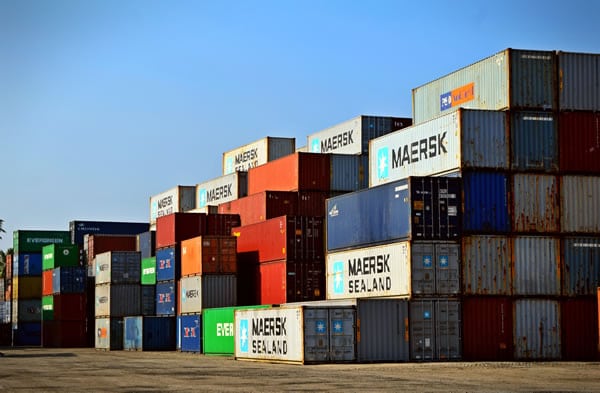US Trade War With China Reaches Stalemate
The US has implemented another round of tariffs against China. The electronics industry is caught in the middle.

We have now reached the next phase of the Trump administration’s planned tariffs on imports from China. On September 24, a third round of tariffs went into effect on midnight. This round includes some products used by the electronics industry, such as copper, nickel, steel, and other metals; select tools; select wire products; select appliances, machinery, and automotive parts; select batteries, insulators, LEDS, and printed circuit assemblies; television and broadcast equipment; a range of substances used in the soldering of electronic parts; and chemical preparations used in lead, metal, and plastics. These tariffs are currently at 10% but will increase to 25% on January 1, 2019, if the US and China fail to reach a successful agreement before the end of the year. (See the full tariffs list for more details.) This is a powerful incentive for China to negotiate.
In the meantime, China’s Commerce Ministry accused the US of causing an “economic emergency” and announced its own retaliatory measures, imposing a tariff of 5% to 10% on $60 billion worth of US products. More than 5,000 US goods will be affected, including food and beverage products, chemicals, clothes, machinery, and auto parts.
This marks a new phase in a prolonged and, for some companies, painful trade war with China. Both countries are now locked in an economic stalemate that is not expected to budge before the US midterm elections. Lindsay Walters, deputy White House press secretary, said, “We remain open to continuing discussions with China, but China must meaningfully engage on the unfair trading practices.”
China says it is also open to negotiations. “The door for trade talks is always open but negotiations must be held in an environment of mutual respect,” according to a white paper issued by the Xinhua News Agency, saying that negotiations “cannot be carried out under the threat of tariffs.” However, in China, some theories are circulating that suggest that the tariffs situation isn’t simply about rebalancing trade, but about a larger US strategy to contain China’s trajectory towards global dominance. Despite cooling growth in recent years, China is on track to overtake the United States as the world’s largest economy by 2030. The tariffs come amid a larger troubled relationship context that includes the exclusion of China from Pacific Rim military exercises, the US focus on Taiwan, and other perceived slights.
Economists are concerned about the global impact of these actions. Fitch Ratings downgraded its world growth forecast for 2019 by 0.1% to 3.1% and warned of additional risks. Retailers such as Target, Home Depot, and Walmart have said tariffs will force them to raise prices on consumer goods. (Some companies, including Apple and Fitbit, have managed to negotiate special exclusions from the tariffs lists.)
Bishop & Associates is paying special attention to trade actions that impact electronics components. We also recognize that US trade actions serve the ultimate goal of protecting the electronics industry and the significant intellectual property it has contributed to global technologies. The US has accused China of unfair trading practices, including dumping, industrial subsidies, IP theft, and forced technology transfer. By targeting trade, the hope is to reduce trade imbalances and secure US intellectual property.
Signs of Progress
On September 24, the Trump administration announced that it has reached its first successful major trade agreement. The US has revised the KORUS agreement with South Korea, reducing the US trade deficit with that country by permitting the sale of 50,000 US vehicles in Korea that meet US emission standards, rather than Korean standards. South Korea will also cut 30% of its steel imports to the US. Both of these developments have a positive impact on connector and electronics companies. The deal will take effect on January 1 — if South Korean lawmakers sign off on the deal; this depends on the US exempting South Korean vehicles from tariffs. In exchange, the US will provide its support to South Korea as it negotiates peace with North Korea.
The US has also reached a tentative agreement to preserve trade between its two largest export markets, Canada and Mexico. The revised deal will give the US greater access to Canada’s dairy markets, cap automobile exports from Canada to the US, and have yet-to-be-disclosed impacts on manufacturing, online shopping, and IP.
Europe is in “exploratory talks” with the US about a limited trade agreement; we expect those talks to begin in November. We see these steps as positive signs that point towards an eventual successful negotiation with China.
IPC — Association Connecting Electronics Industries issued a statement in support of continued strong measures.
“IPC backs robust efforts by the United States to address discriminatory treatment of US companies by its trading partners. We hold this same position in each of the countries where we have member companies. Trade agreements are meaningful only so long as countries that voluntary enter into them live up to the obligations they have made,” said John Mitchell, IPC president and CEO.
We also recognize that some of these trade actions have put direct pressure on the connector industry. Many companies are experiencing stress and uncertainty during this process. We are listening to companies like TLC Electronics, which says it will bill its customers for increases caused by tariffs as a separate and temporary line item, rather than impose an across-the-board price increase. We see that companies like ECCO Connectors are working closely with their customers to come up with alternative sourcing options when possible, and communicating about the costs of tariffs when they cannot be avoided. We recognize the uneven consequences on small companies like Blue Jeans Cable, who says that most classes of connectors they work with are subject to the tariffs, but not cable assemblies with connectors already installed on them.
“What this means is that a Chinese cable assembly house can buy these connectors at low cost, not having to pay the punitive tariffs, and can then make cable assemblies and export them to the US, and still not pay these tariffs. If we build the same cable assembly using the same cable and connectors, we pay the tariff because we’ve brought the connector in separately — subject to the tariff — while the Chinese producer has brought it in as part of an assembly, not subject to the tariff. The result is a systematic competitive advantage for Chinese-based cable assembly firms over domestic cable assembly firms like Blue Jeans Cable. We could, indeed, were we so inclined, open a cable assembly shop over there — paying lower Chinese wages and buying our connectors without tariff — and, in so doing, lay off American workers in favor of Chinese workers. We’re not going to do that, but we’re not the only people in this industry; somebody else very well might.”
These are challenging scenarios, and each company in the industry is making the difficult decisions it needs to in order to ultimately reap the rewards of more fair future trade relationships. We take assurances from organizations such as the ECIA, which is working closely with its members to understand and minimize the impact of this situation and remain optimistic that an equitable solution can be achieved.
To see relevant tariffs dating back to the beginning of the year, revisit our July 31, 2018, article on the tariffs situation. We pick up here where that tally left off.
- August 10: The US doubles tariffs on aluminum and steel from Turkey.
- August 14: Turkey announces new tariffs on US exports of automobiles, machinery, alcohol, and tobacco in retaliation for US tariffs on Turkish goods.
August 23: The US imposes tariffs on an additional $16 billion in goods imported from China. (See Item 70.00 on the tariff schedule: Connectors for optical fibers, optical fiber bundles, or cables.)
August 30: President Trump rejects EU offer to eliminate all tariffs on US autos if the US did the same. A new working group is established to negotiate EU-US trade issues. - September 22: China calls off planned talks with the US, stating it will resume the matter after the US elections
- September 24: The US slaps China with $200 billion worth of tariffs on imported goods; China responses with $60 billion worth of tariffs on US goods.
- September 24: The US announces a new trade agreement with South Korea.
- September 30: The US, Canada, and Mexico reach an agreement for a new trade deal called the United States, Canada, and Mexico agreement.
- October 1: China cuts import taxes on non-US products for steel, wood, machinery, electrical equipment and other products.
As the US and China continue to hold their respective grounds, industries and companies are taking protective measures to weather its impacts. Some companies that manufacture in China are looking at other countries in Asia as alternatives that avoid the tariffs situation while continuing to provide the advantages of manufacturing in the region. In the US, moving operations to Mexico to avoid Chinese tariffs on metals has been a solution for some companies caught in the trade war. US farmers impacted by tariffs on crops such as soybeans, sorghum, cotton, and corn are now receiving the first round of checks from a $12 billion subsidy plan. As they look forward, they are focusing on developing new markets for these goods in new foreign markets. In China, meanwhile, the government is pressing farmers to increase production to replace American imports. In a scenario in which China doesn’t negotiate a better deal, we do see potential upsides. The US could gain in many ways, including the return of manufacturing to the US and resulting increases in collected taxes, the end of IP loss, and other benefits associated with reshoring.
All of these shifts ultimately create additional uncertainly across a range of industries. A stable, long-term solution is needed to bring stability and equity to all global trading relationships.
Interested in a specific market? Click a market below for current articles and news.
Automotive, Consumer, Industrial, Medical, Mil/Aero, Datacom/Telecom, and Transportation
- Is the Gold Rush Over for China Connector Sales? - October 17, 2023
- The Top Five European Connector Suppliers for Product Quality and Price Competitiveness - October 10, 2023
- 2023 Top Five European Connector Suppliers - September 26, 2023














